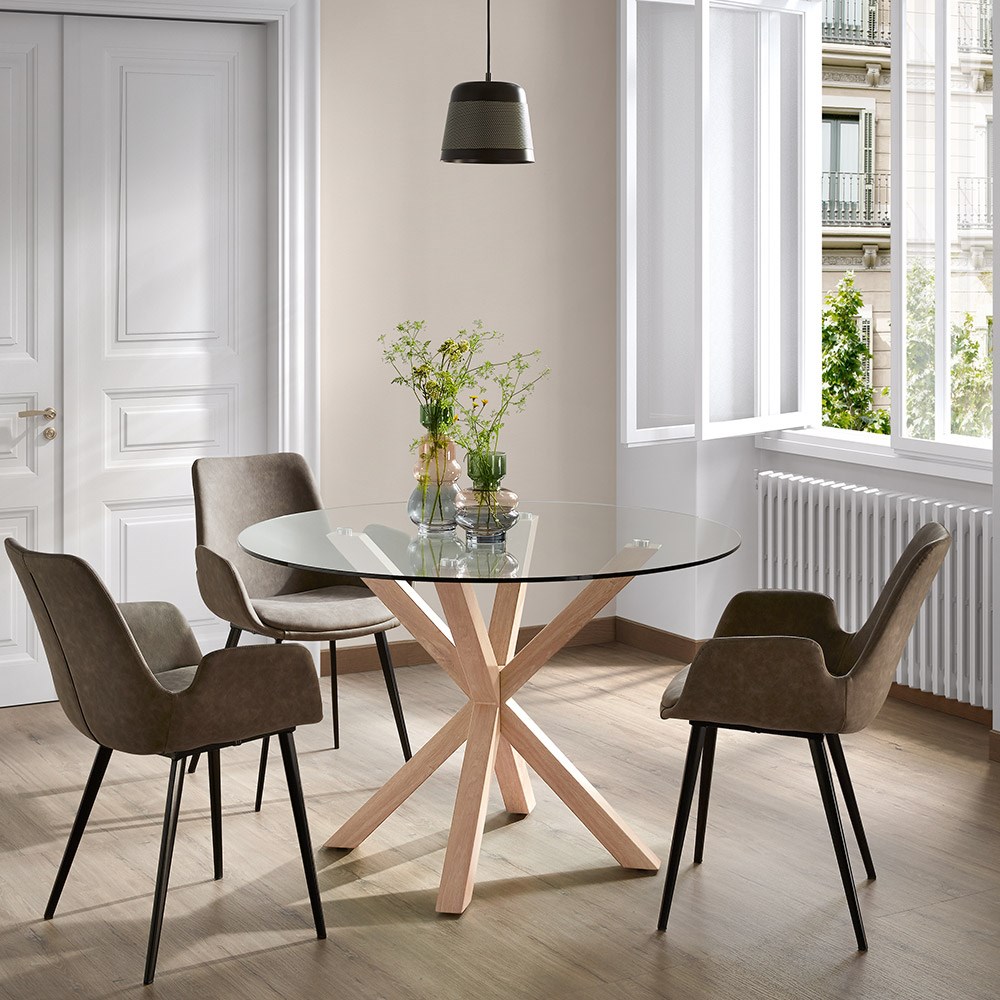When selecting a dazzling chandelier to illuminate your dining area, choosing just the right size is key to both function and beauty. Follow this comprehensive guide to determine the ideal chandelier dimensions and proportions based on your distinct table measurements, seating needs, ceiling heights and overall room scale.

Take Precise Table Measurements
Start by carefully measuring your dining table length and width or diameter. This gives you a baseline for minimum chandelier size needed.
Rectangle Table Dimensions
For rectangular dining tables, measure the precise length end-to-end and width side-to-side. Note if extension leaves are included in the dimensions or add those separately.
Round Table Diameter
For round dining tables, measure the full diameter across the table at its widest point.
Oval Table Dimensions
For oval or elliptical shaped tables, measure both the longest and shortest diameters across the surface.
Table Base Floor Space
Pay attention to the amount of floor space taken up by wide table bases, pronounced legs, pedestals or trestle style bases, which should also be factored under the chandelier glow.
Determine Chandelier Placement
Consider whether the chandelier will hang centered precisely over the table itself, or slightly off-center in the overall dining room layout.
Centered Over Table
Hanging the fixture centered over the tabletop means the chandelier only needs to span the dimensions of the table itself.
Off-Center Placement
If hung off-center in the room, the chandelier needs adequate overall width to reach comfortably over table edges. Allow even more overhang for off-center alignment.
High Ceiling Placement
For chandeliers mounted on tall or double height ceilings, the fixture will need to be sized larger than the table width alone to illuminate properly from the increased height.
Maintain Scale and Proportion
The chandelier proportions should align pleasingly with the scale of your dining table itself as well as the surrounding room.
Too Small
Avoid selecting a chandelier that appears too diminutive and insignificant over the table setting. The effect should be well-scaled and impactful.
Too Large
Conversely, an oversized chandelier can feel heavy, domineering and imbalanced within the room.
Harmonious Proportions
Ideally, the chandelier will complement both the table it illuminates and the overall dining room it inhabits in size and proportion.
Consider Seating Capacity
The size of your dining table and number of seats it can accommodate will indicate the appropriate chandelier width.
Intimate Dining
For petite dining tables seating just 2 to 4 diners, a compact chandelier as narrow as 20-24 inches can beautifully illuminate the space.
Casual Dining
At a table seating 6-8 people for casual family meals, target chandelier sizing in the 30-36 inch wide range to adequately span the increased table length.
Formal Large Dining
For spacious formal dining with seating for 10-12 guests, a grand chandelier around 40-50 inches wide helps anchor the expansive table handsomely.
Estate Banquet Dining
At an estate-sized banquet table that seats 14+ people for large gatherings, an opulent chandelier 5+ feet wide may be needed to fill the space.

Factor in Ceiling Heights
Standard dining table height is approximately 30 inches. But ceiling height impacts suitable chandelier size and proportions.
Low-Hanging Fixtures
For chandeliers that hang just 24-30 inches above the tabletop, only minimal width is needed for an intimate glow.
Mid-Range Heights
At 30-36 inch hanging heights from the ceiling to bottom of chandelier, the fixture will need wider dimensions for proper illumination over the table.
High Ceilings
In rooms with dramatic double height ceilings, the chandelier will need to be sized much larger approaching the maximum width to illuminate the table from that vertical distance.
Mind Overall Room Proportions
Take care not to select a chandelier so overly wide that it exceeds the general width or length of the overall dining room space. This can throw off proportions.
Narrow Dining Rooms
In narrow dining rooms in particular, avoid chandeliers with effusive horizontal spans that would overwhelm the confined floor plan.
Grand Open Spaces
However, a sprawling great room with expansive dining area could warrant an equally grand chandelier as a focal point.
Follow General Size Guidelines
While each dining space is unique, the following general size guidelines provide a helpful starting point:
- Intimate Dining Chandelier – Approximately 20-24 inches wide
- Casual Dining Chandelier – Approximately 24-36 inches wide
- Formal Dining Chandelier – Approximately 36-50 inches wide
- Estate/Banquet Chandelier – 4+ feet wide
Consider Style Factors
Keep in mind that the chandelier’s specific style details and aesthetics impact size suitability.
Bold, Ornate Styles
A very bold, ornate chandelier with heavy visual presence may overwhelm the space if dramatically oversized.
Airy, Transparent Styles
Conversely, an airy see-through chandelier with delicate open metalwork or crystal accents can potentially work even oversized since it doesn’t strongly dominate visibility.
Low-Hanging Styles
Low hanging drum or pendant chandelier types need smaller width parameters to prevent bumping people’s heads as they sit and stand at the table.
Measuring your distinct dining table and evaluating room proportions, seating capacity, ceiling heights and overall chandelier style will lead to beautiful, balanced chandelier sizing. Follow these guidelines to achieve the ideal fixture size and scale.










